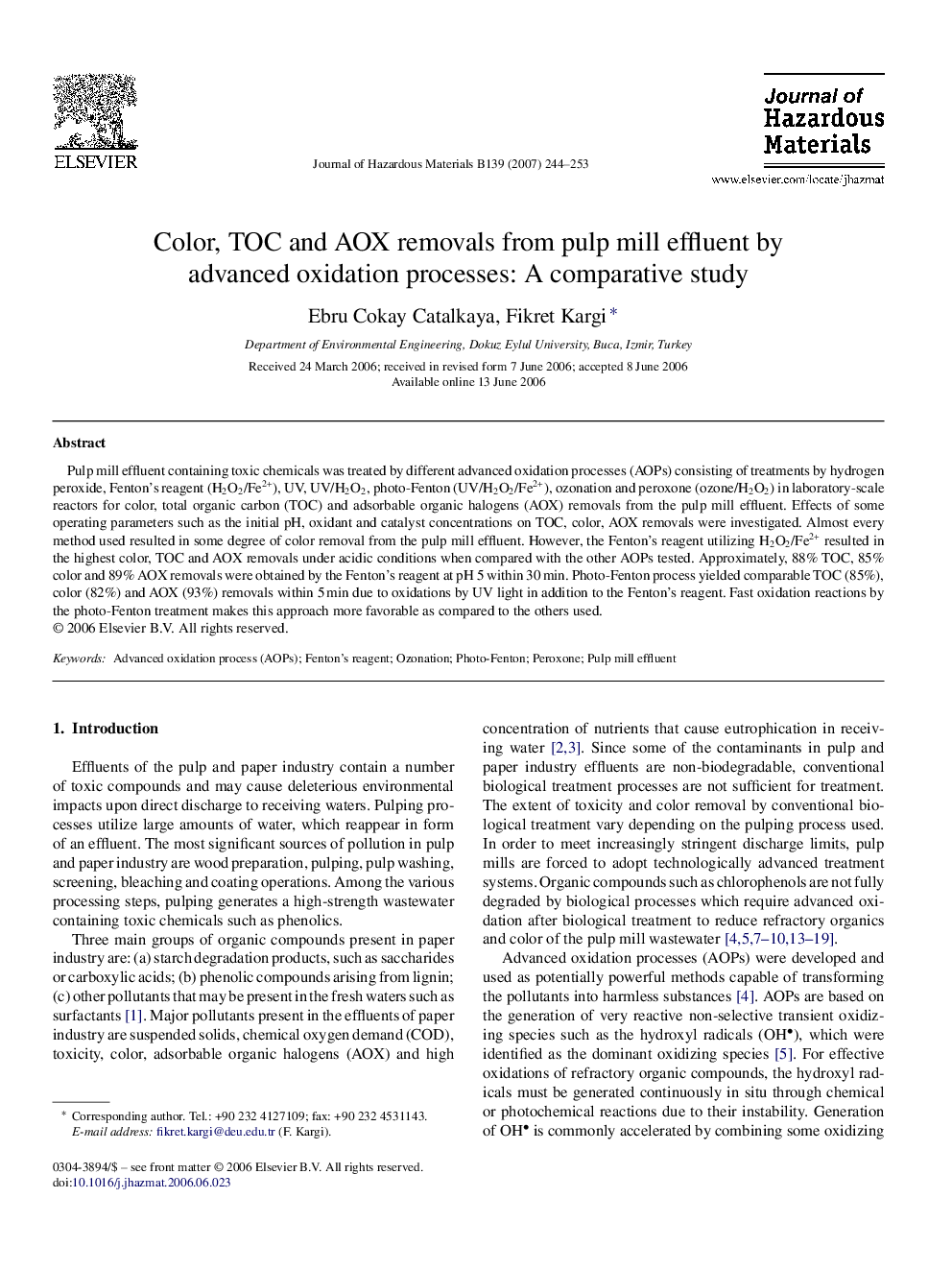| Article ID | Journal | Published Year | Pages | File Type |
|---|---|---|---|---|
| 584896 | Journal of Hazardous Materials | 2007 | 10 Pages |
Abstract
Pulp mill effluent containing toxic chemicals was treated by different advanced oxidation processes (AOPs) consisting of treatments by hydrogen peroxide, Fenton's reagent (H2O2/Fe2+), UV, UV/H2O2, photo-Fenton (UV/H2O2/Fe2+), ozonation and peroxone (ozone/H2O2) in laboratory-scale reactors for color, total organic carbon (TOC) and adsorbable organic halogens (AOX) removals from the pulp mill effluent. Effects of some operating parameters such as the initial pH, oxidant and catalyst concentrations on TOC, color, AOX removals were investigated. Almost every method used resulted in some degree of color removal from the pulp mill effluent. However, the Fenton's reagent utilizing H2O2/Fe2+ resulted in the highest color, TOC and AOX removals under acidic conditions when compared with the other AOPs tested. Approximately, 88% TOC, 85% color and 89% AOX removals were obtained by the Fenton's reagent at pH 5 within 30Â min. Photo-Fenton process yielded comparable TOC (85%), color (82%) and AOX (93%) removals within 5Â min due to oxidations by UV light in addition to the Fenton's reagent. Fast oxidation reactions by the photo-Fenton treatment makes this approach more favorable as compared to the others used.
Keywords
Related Topics
Physical Sciences and Engineering
Chemical Engineering
Chemical Health and Safety
Authors
Ebru Cokay Catalkaya, Fikret Kargi,
